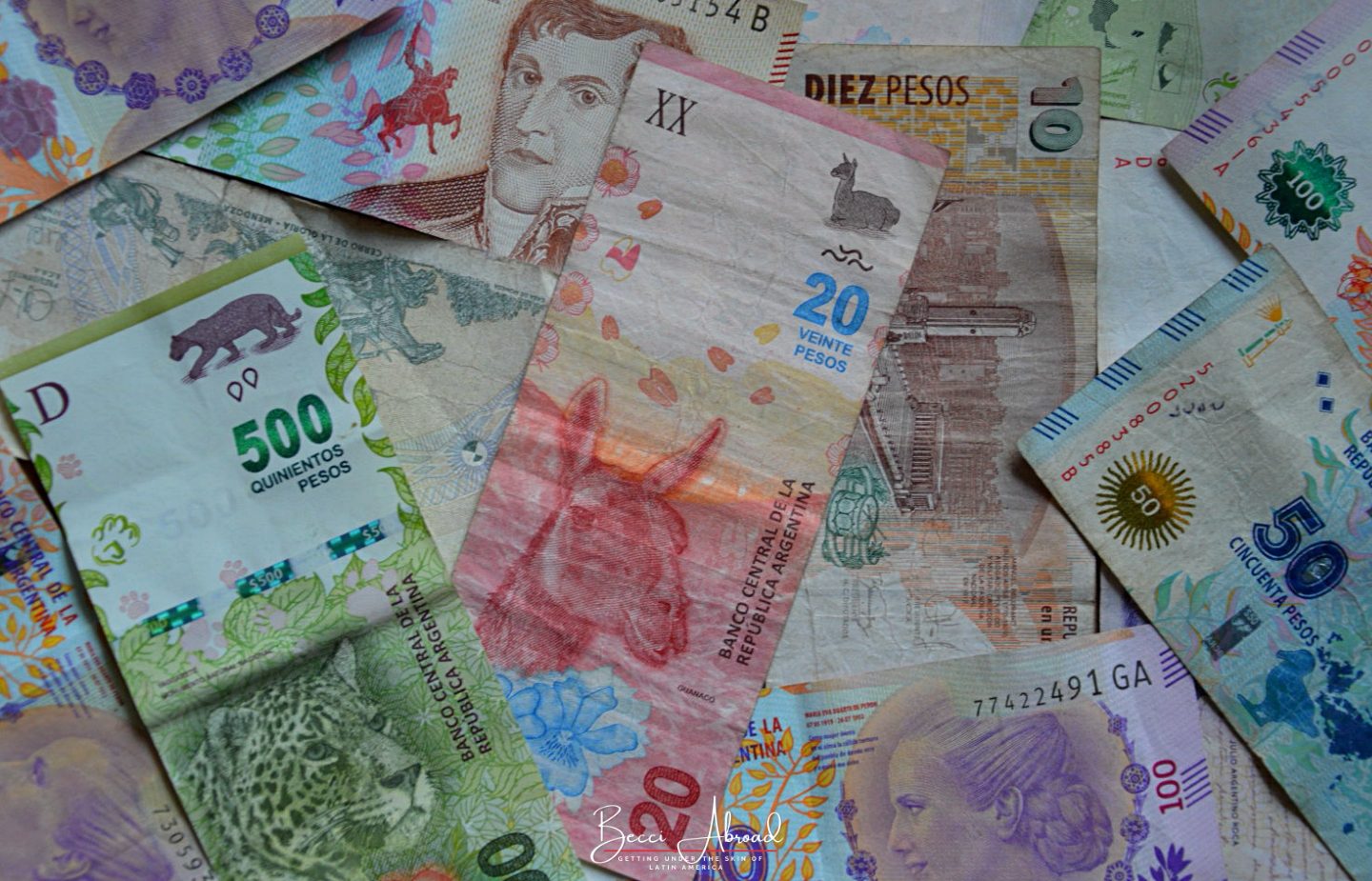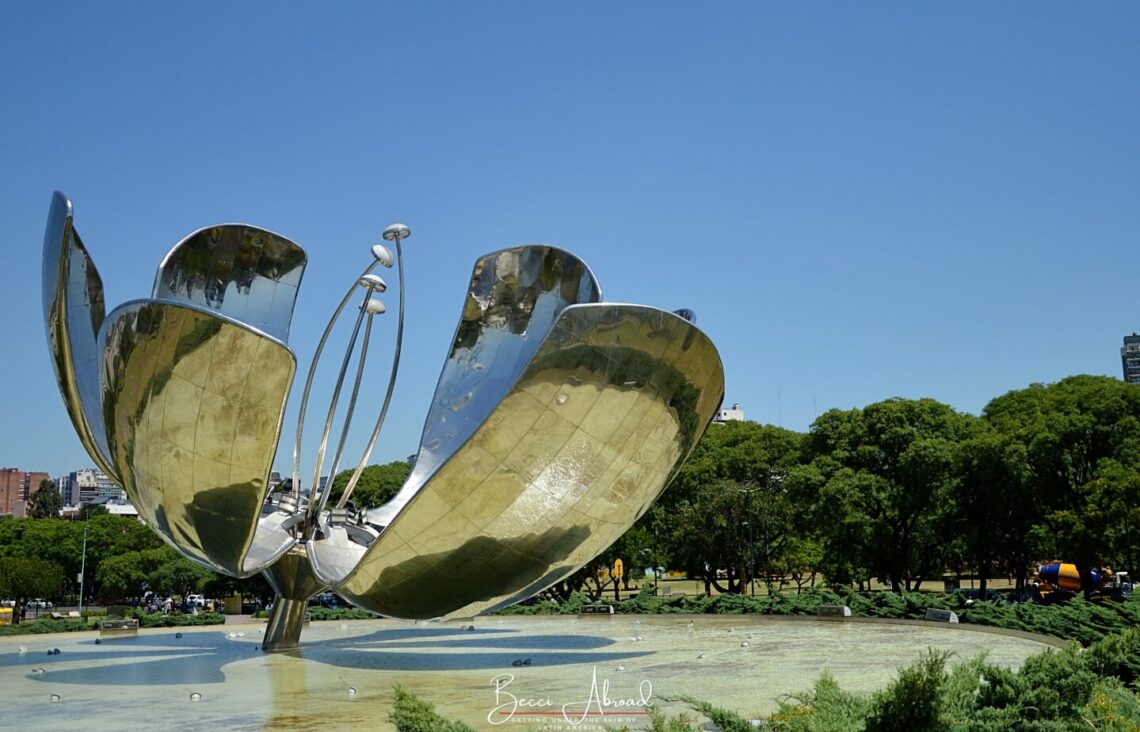
The 20 Most Popular Things to Do in Buenos Aires, Argentina
Are you traveling to Buenos Aires for the first time? Are you wondering about what are the most popular things to do in Buenos Aires?
Then you have come to the right place!
I lived for seven years in Buenos Aires and have done the most popular tourist attractions and things to do in Buenos Aires, at least, a couple of times!
Argentina’s bustling capital city has so many things to offer, but in my opinion, these are the 20 most popular things to do in Buenos Aires for first-timers.
If you want a more detailed itinerary for your Buenos Aires visit, then check out my 3-day itinerary for first-timers in Buenos Aires.
If you are looking for a more seasonal traveler to Argentina’s capital city, you might enjoy my ultimate guide to hidden gems in Buenos Aires.
Join me on a journey through all the most popular things to do and see in Buenos Aires!
Disclosure: Some of the links below are affiliate links. This means that at no additional cost to you, Becci Abroad will earn a commission if you purchase through one of those links. This helps to pay the bills and the maintenance of the site.
The 20 Most Popular Tourist Attractions & Things to Do in Buenos Aires

#1 The Best View of Buenos Aires: Viewpoint Galería Guëmes
The viewpoint at the Güemes Gallery is one of the best things to do in Buenos Aires if you are looking for a stunning panoramic view of Buenos Aires.
In my opinion, the Güemes Gallery’s viewpoint is an absolute must-see for any first-time visitor in Buenos Aires!
The viewpoint is situated inside one of the iconic domes in Buenos Aires. From the platform on the 16th floor inside the dome, you can enjoy the amazing views of Buenos Aires below.
The Güemes Gallery, or Galería Güemes in Spanish, is a shopping arcade from where you can access the viewpoint. The arcade itself is worth a visit for its impressive architecture which has been officially recognized by the city government for its cultural importance for Buenos Aires.
Inside the arcade, you will find access to the viewpoint located in two of the building’s two towers; the Mitre Tower, or Torre Mitre in Spanish.
By the entrance to the Mitre Tower, you can take an elevator to the 16th floor for the viewpoint reception, followed by stairs leading to the top of the dome.
Despite the need to climb stairs to reach the top, the view is so rewarding that you quickly will forget the struggles to get up here.
There is a small entrance fee for visiting. Check the current entrance fee on the website of the Güemes Gallery’s viewpoint.
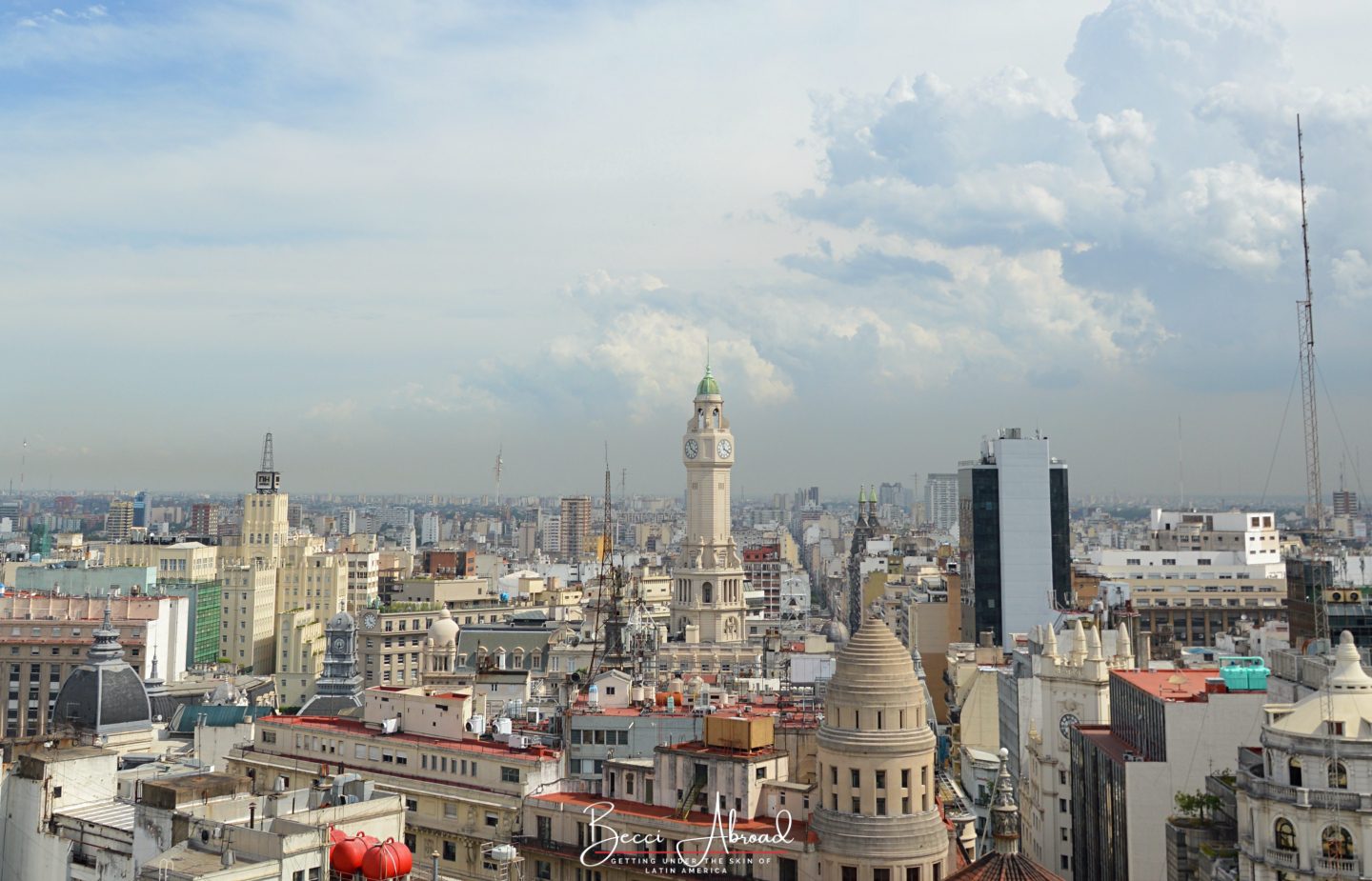
#2 The Presidential Pink Palace: Casa Rosada
The Presidential Palace, also known as Casa Rosada or the Pink House, is one of the most popular attractions in Buenos Aires.
The Presidential Palace serves as the executive office of the Argentine president. The presidential office is located by the iconic Plaza de Mayo square in the bustling heart of downtown Buenos Aires.
The Pink House has played a significant role in various historical events in Argentina. One of the most well-known scenes is the former First Lady, Eva Perón, addressing a large crowd at Plaza de Mayo from the balcony of the Pink House. Madonna portrayed Eva Perón in the song “Don’t Cry for Me Argentina.”
The Pink House is closed to the public during the week. However, you can always drop by to take a quick photo of the Pink House from the outside.
On weekends and public holidays in Argentina, guided tours are available. For details or availability, contact visitascasarosada@presidencia.gob.ar. The online ticket reservation link is currently not working.



#3 The Recoleta Cemetery
The Recoleta Cemetery is a must-visit attraction for everybody visiting Buenos Aires for the first time! I have been to the Recoleta Cemetery several times during my years in Buenos Aires, and the cemetery is a winner every time!
The Recoleta Cemetery has tombs and mausoleums of wealthy Argentine families lined up one next to the other. In fact, the cemetery houses more than 4,600 graves!
The Recoleta Cemetery was built in 1822 and features graves of many historically important personalities in Argentina, including past presidents, Nobel Prize winners, and heroes from the country’s fight for independence.
Eva Perón, the former First Lady of Argentina also known as Evita, is also buried at the Recoleta Cemetery. Her grave is modest and unassuming, and it may easily go unnoticed among the other more impressive graves in the cemetery. However, it is still one of the most visited places in the Recoleta Cemetery.
The last time I visited the Recoleta Cemetery was together with two colleagues from the U.S. They were simply blown away by this mystical and spooky tourist attraction in Buenos Aires!
To get the most out of your visit to the Recoleta Cemetery, you could consider taking one of the guided tours of the Recoleta Cemetery to explore its history and stories!
For the Recoleta Cemetery, it can be a good idea to buy the tickets in advance, but it is also possible to purchase tickets at the entrance to the cemetery.
Close to the Recoleta Cemetery, you will find the National Museum of Fine Art, Museo Nacional de Bellas Artes, which features an extensive collection of fine Argentine and Latin American Arts.


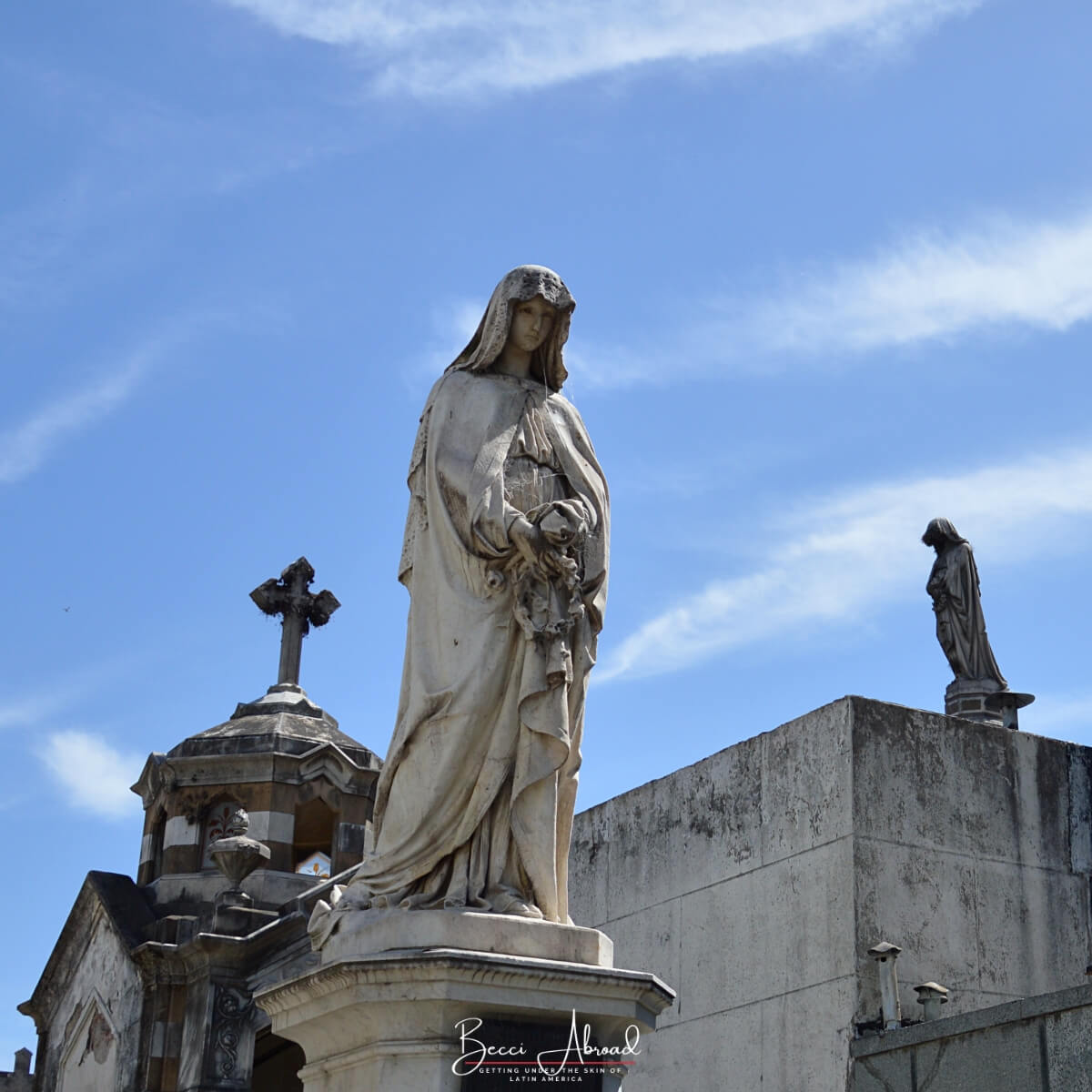
#4 The Metal Flower: Floralis Genérica
Floralis Genérica is a sculpture of a gigantic flower located in the Recoleta neighborhood of Buenos Aires.
Floralis Genérica, or translated Generic Floralis, is one of the most popular things to do in Buenos Aires, and by far my favorite landmark in Buenos Aires!
The aluminum flower sculpture in Recoleta brings a contemporary touch to the historic Recoleta neighborhood.
The sculpture, designed by Argentine architect Eduardo Catalano in 2002, was intended to open and close based on the time of day. However, this function has not been operational for several years.
Under a huge storm in 2023, one of Floralis Genérica´s enormous leaves broke. So, if you visit the sculpture today, it will look a bit different than my photos – at least, until the city government fixes this gorgeous landmark again!
Floralis Genérica is located inside the public park, called Parque de las Naciones Unidas, translated as The Park of the United Nations. The entrance to the park is free. Find more free things to do in Buenos Aires here!
Explore the Floralis Genérica and many other amazing landmarks with a top-rated private tour of Buenos Aires.

#5 The Most Beautiful Bookstore: El Ateneo Grand Splendid
The Ateneo Grand Splendid is truly Buenos Aires’ most unique bookstore, and definitely one of the most popular things to do in Buenos Aires for everybody visiting!
The building that houses the Ateneo Grand Splendid bookstore today, was originally built as a theater in the 1920s. The theater was closed down and changed venue multiple times before becoming a bookshop in the early 2000s.
Despite the changing venues, the original features and decorations from its days as a theater were retained.
The original interior decorations in Ateneo Grand Splendid are what make it one of the most magical bookstores I have ever seen! And it is not just me saying that Ateneo Grand Splendid is a class of its own!
Ateneo Grand Splendid was named the world’s most beautiful bookstore by National Geographic and it was number two on the Guardian’s list of most beautiful bookstores in the world!
The store has approximately 120,000 books and also features a bar on the former stage area of the theatre, allowing customers to enjoy a coffee right in the middle of this gorgeous setting.
The Ateneo Grand Splendid bookstore is located on Avenida Santa Fe in the heart of Recoleta. The entrance is free of charge. However, if you want to learn more about the history and secrets of the impressive place, you could consider a guided tour of Ateneo Grand Splendid.
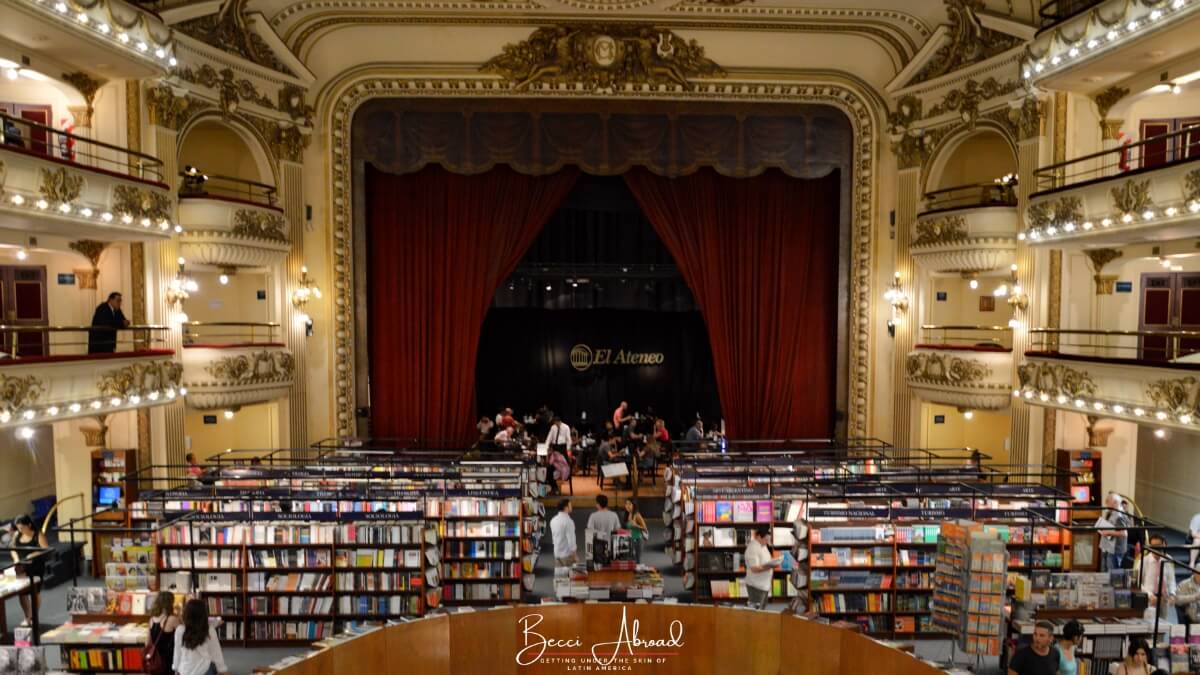
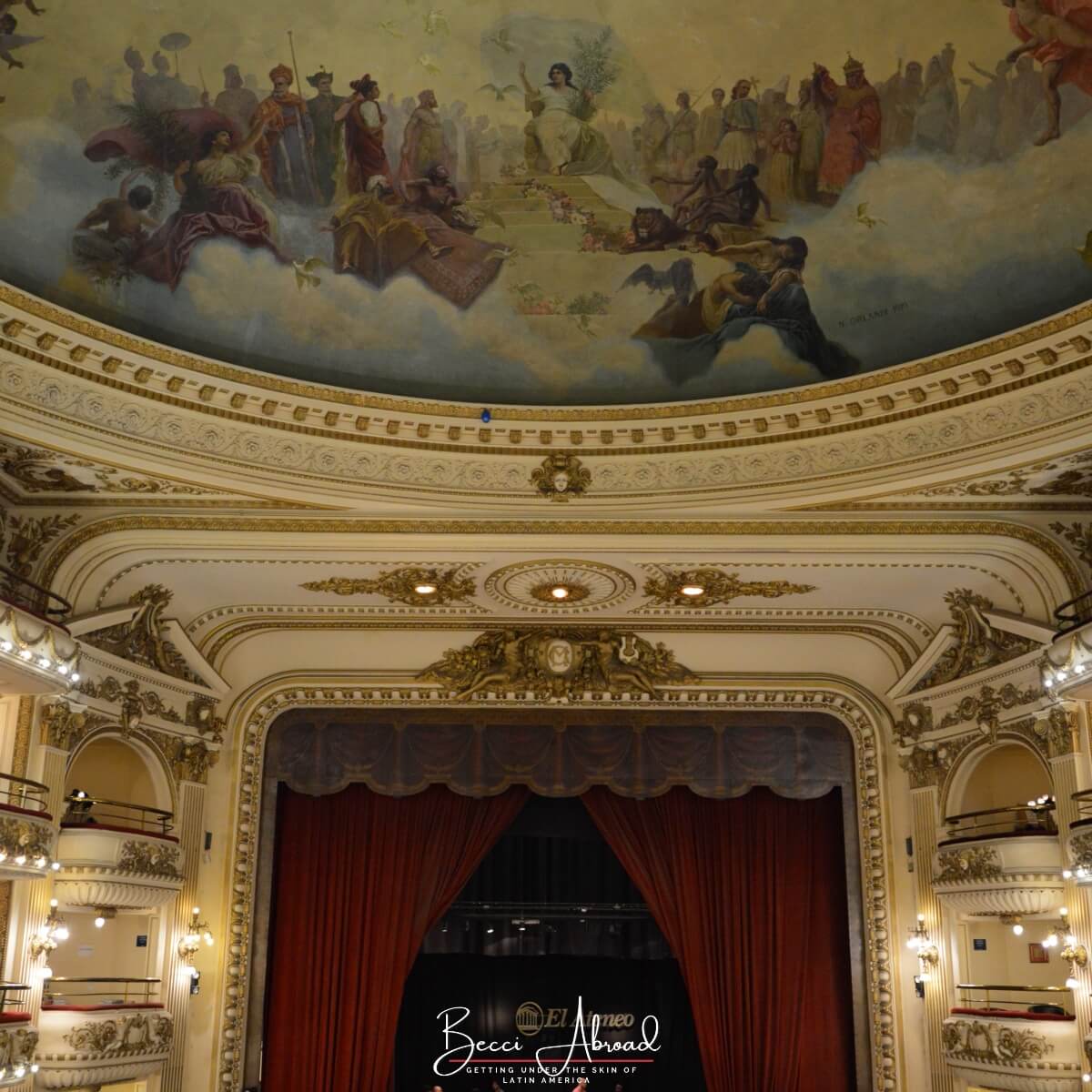

#6 The Historical Square: Plaza de Mayo
Plaza de Mayo, known as the May Square, is a historic square located in the center of Buenos Aires, and one of the things to do in Buenos Aires that you can’t miss!
The Square is named in commemoration of the May Revolution in Argentina, which marked the country’s fight for independence from Spanish colonial rule in May 1810.
Apart from housing the Presidencial Pink House, Plaza de Mayo is also home to Buenos Aires Cathedral, the former Spanish town hall, el Cabildo, and the Argentine National Bank.
Plaza de Mayo gained international recognition during the Argentine Dirty War in the 1970s when the Mothers of the May Square protested silently against the illegal disappearances of their children and grandchildren by the military dictatorship.
The town hall museum, Museo Histórico Nacional del Cabildo y la Revolución de Mayo, offers the best view over the Plaza de Mayo and the famous presidential Pink House.
Plaza de Mayo is situated in the neighborhood of Montserrat in Buenos Aires. On one side of the square, you find downtown Buenos Aires, commonly known among locals as Microcentro porteño. On the other side of Plaza de Mayo, Buenos Aires’ oldest neighborhood, San Telmo, awaits you.
San Telmo is known for its historical charm, featuring old colonial houses, cobblestone streets, and the popular San Telmo Market on Sundays.
#7 The Colorful Houses in Buenos Aires: La Boca and the Caminito Street
The colorful neighborhood of La Boca and El Caminito Street are one of the most popular tourist attractions in Buenos Aires!
Most travelers associate the name La Boca with the colorful houses featured in many travel catalogs for Buenos Aires. However, the colorful houses are actually only a small part of the La Boca neighborhood.
El Caminito is a small cobblestone street in the heart of the most touristic part of La Boca. The colorful neighborhood is considered a street museum by the city government. However, with the large number of souvenir shops, restaurants, and street performers, el Caminito and La Boca has lost its significance as a museum.
In the seven years, I lived in Buenos Aires, I only visited La Boca twice. And never felt the need to visit it more. You will find a few locals that go to La Boca to hang out. The area has a reputation for being more of a tourist trap.
La Boca is also the home of the famous soccer station, la Bombonera, belonging to the local soccer club Boca Juniors. The official name of la Bombonera is El Estadio Alberto J. Armando, however, most locals know it by its nickname.
In the late 19th century and early 20th century, La Boca played a significant role in the urban development of Buenos Aires. During this time, Argentina experienced a large wave of European immigration.
European immigrants who arrived in Buenos Aires at that time often had limited resources. They settled in neighborhoods like La Boca and San Telmo, where they lived in large groups in old houses or built new structures with whatever materials they could find.
The buildings in La Boca were created as tenements, also called conventillos, where the larger communities of immigrants lived together. The constructions were very precarious and made of wood and sheets of metal.
The colorful houses in La Boca are said to have been painted with leftover ship paint because of the immigrants’ limited resources. Another popular story about La Boca’s colorful houses is that the houses were painted by Italian immigrants from Genoa inspired by the colorful houses in their home city.
La Boca and El Caminito are located in the southernmost end of the City of Buenos Aires, bordering San Telmo. You can grab a taxi or jump on a bus to get there. It is also possible to sign up for a bike tour of La Boca.
If you are a first-timer in Buenos Aires, I would recommend that you sign up for a guided tour of La Boca. First and foremost, to help you learn more about the area’s history. But also for your safety!
Petty theft is an issue in Buenos Aires, in general, but especially in La Boca. It can be difficult to differentiate between safe and unsafe areas. By taking a guided tour, you can rely on a local guide to navigate La Boca and El Caminito safely.
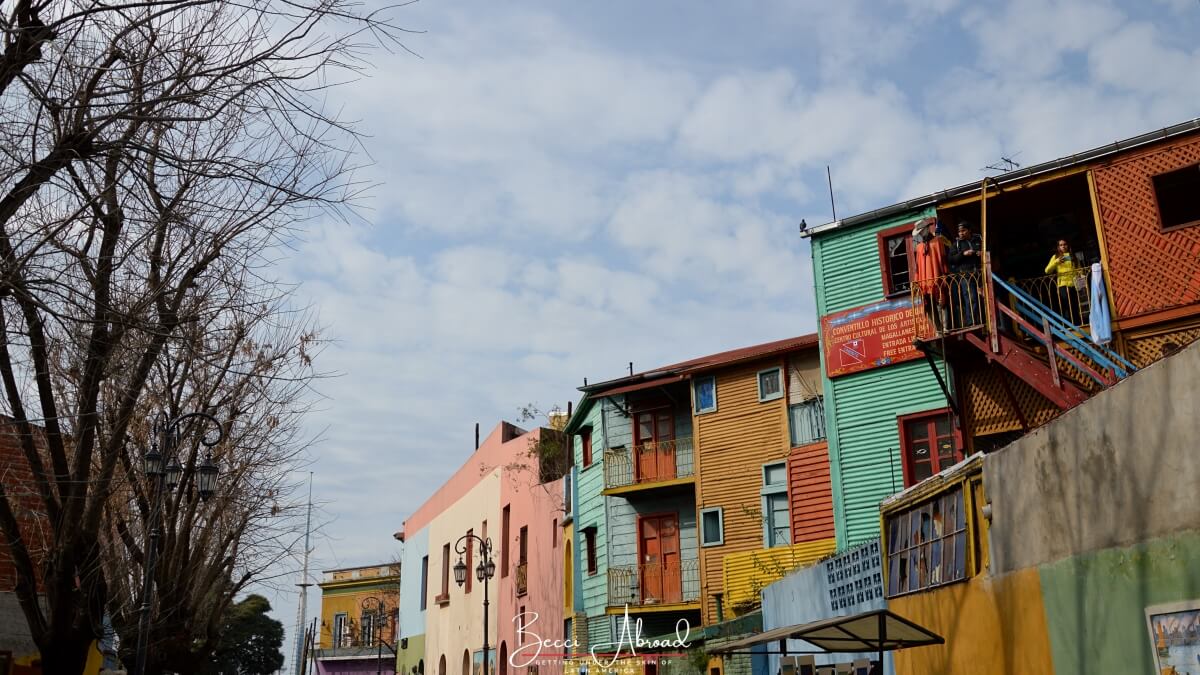


#8 The San Telmo Market: Feria de San Telmo
San Telmo is the oldest neighborhood in Buenos Aires, and the neighborhood hosts a weekly street fair every Sunday, called the San Telmo Market.
At the San Telmo Market or Feria de San Telmo in Spanish, you can find handicrafts, antiques, and souvenirs to bring with you home.
The San Telmo Market takes place at Calle Defensa in San Telmo. The market runs from Plaza de Mayo to Plaza Dorrego, a historical square at the heart of San Telmo.
Aside from shopping at the Sunday market, San Telmo is also known for its tango scene. You can catch a live tango show with professional tango dancers or enjoy a live street tango performance at Plaza Dorrego.
San Telmo is one of the best things to do in Buenos Aires for anyone wanting to learn about Buenos Aires’ history. The charming historic neighborhood is known for its picturesque cobblestone streets, colorful colonial houses, and charming antique shops.
Even though your Buenos Aires itinerary doesn’t include visiting on a Sunday to experience the San Telmo Market, don’t miss out on visiting San Telmo!
San Telmo also offers the chance to see Buenos Aires’ narrowest house, a Mafalda sculpture, a modern art museum, a city museum, and a museum with access to the city’s historic water tunnels, Zanjón de Granados.
Learn more about the best things to do and see in San Telmo.

#9 The Modern Habor: Puerto Madero & the Woman Bridge
Puerto Madero is a modern and upscale district in Buenos Aires, known for its concentration of international businesses and high-quality dining options.
Puente de la Mujer, or the Woman Bridge, is the main attraction in Puerto Madero and an iconic landmark in Buenos Aires.
The architect, Santiago Calatrava, drew inspiration from a tango dancer when designing the bridge. The bridge’s opening for ships is meant to mimic the action of a woman dancing a tango, leaving the interpretation of the design open to individual perception.
The are plenty of restaurants in Puerto Madero, but they are known for their higher prices. Nevertheless, during lunchtime, you can find many of the same places offering more affordable menu options, known as menú del día.
Puerto Madero, originally built in 1882 as part of the Buenos Aires harbor, fell into disuse due to shallow waters. The area still features old red brick packhouses, which have been modernized while preserving their original structure.
Puerto Madero is one of the few locations in Buenos Aires that highlights the city’s location near the river. Past Puerto Madero, you will find Reserva Ecológica Costanera Sur, a vast natural reserve and the largest green space in Buenos Aires. The reserve is a must-visit for nature lovers looking for a break from the hectic city life in Buenos Aires. The natural reserve leads to the banks of the Río de la Plata.
Taking a bike tour of Buenos Aires is a quick way to see more of the city, including Puerto Madero and Reserva Ecológica.
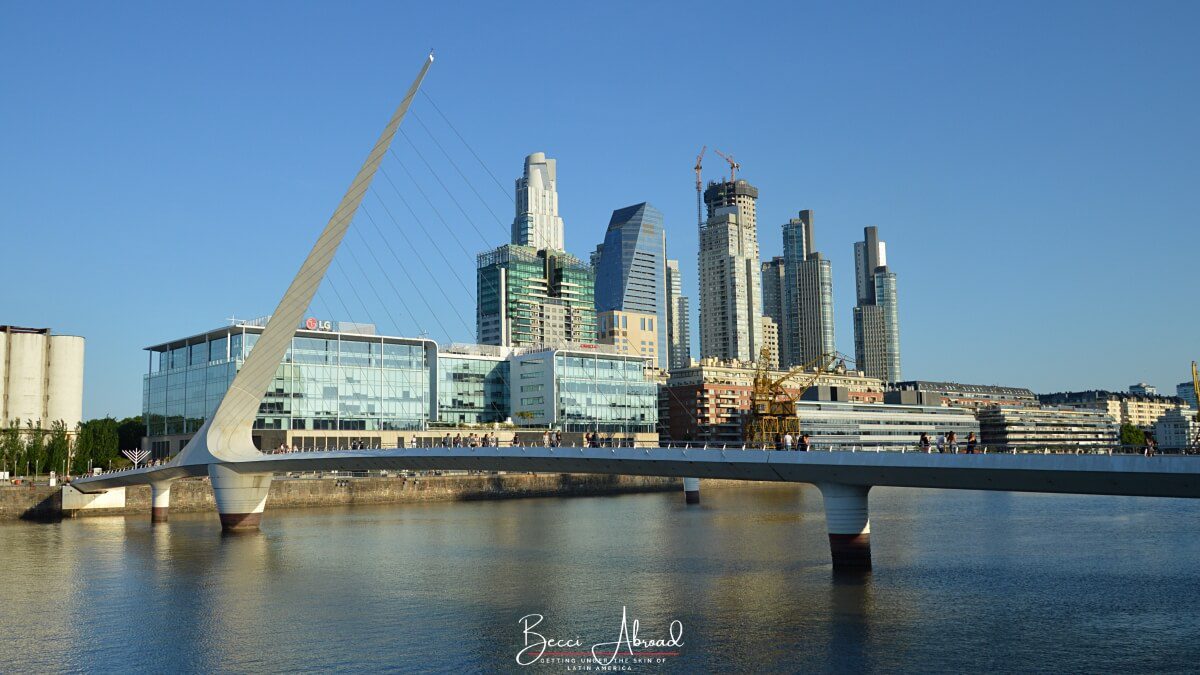
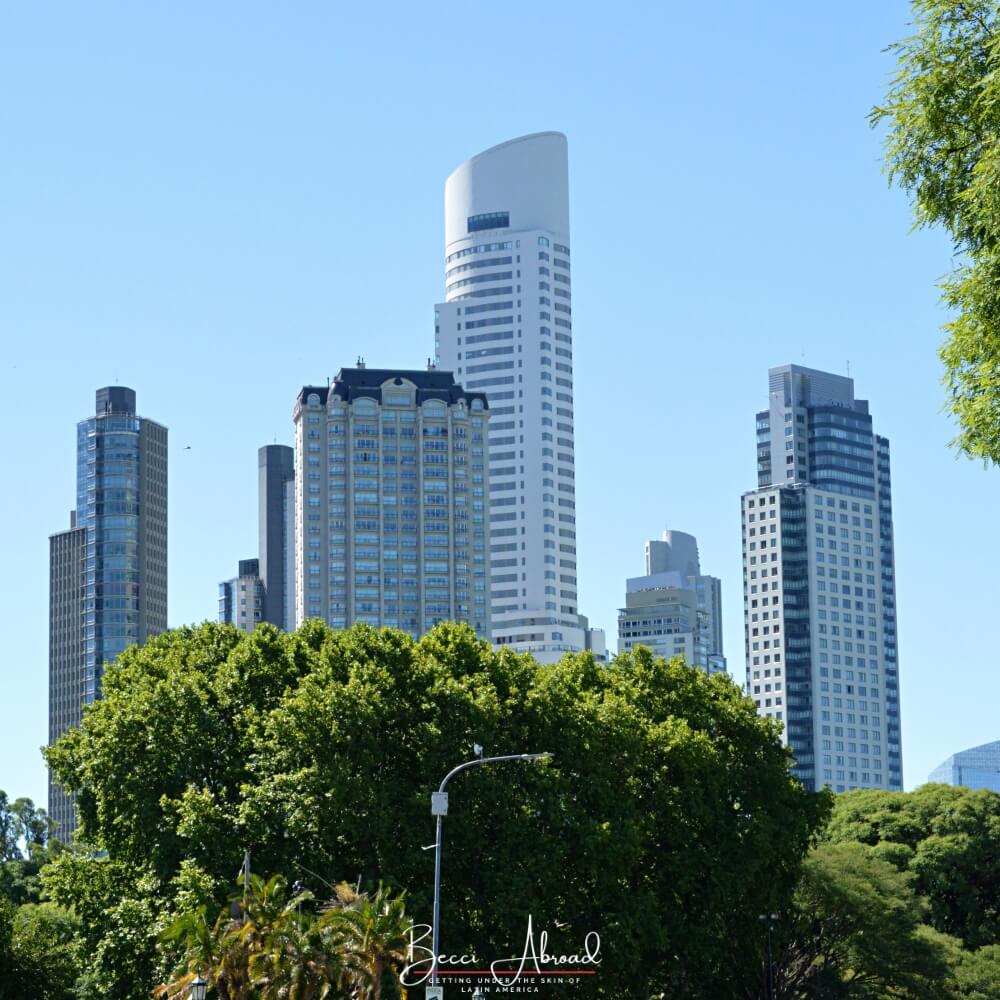
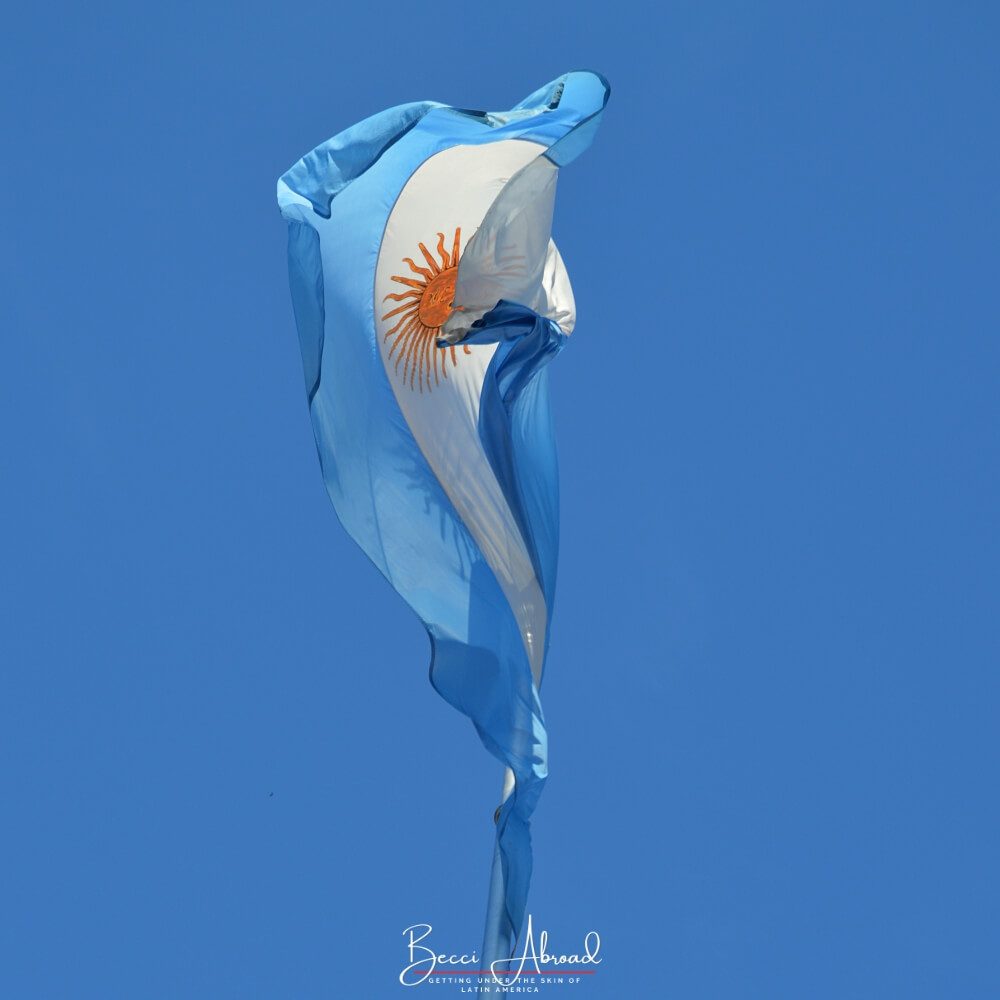
#10 The Most Iconic Avenue in Buenos Aires: Avenida 9 de Julio
Avenida 9 de Julio, also known as Avenue 9th of July, is a must-visit thing to do in Buenos Aires! The avenue is considered to be the world’s widest avenue and an important landmark in Buenos Aires.
Located on Avenida 9 de Julio, you will find a massive building easily recognized for its gigantic silhouette of Eva Perón. This building houses the Ministry of Public Health in Argentina.
One silhouette of Eva Perón appears elegant, while the other looks more assertive, speaking into a microphone.
The story goes that the elegant figure faces the wealthy Northern neighborhoods, while the assertive one faces the South, speaking to empower the working class to protest.
To see both sides of the Eva Perón silhouette, walk down Avenida 9 de Julio by the Ministry of Public Health’s large building.
#11 The Buenos Aires Landmark: el Obelisco
One of the most iconic and important historical landmarks in Buenos Aires is the Obelisk; or el Obelisco in Spanish.
The towering monument stands proudly with a height of 220 feet (67 meters) on a small oval square, called Plaza de la Republica, right at the intersection of Avenida 9 de Julio and Avenida Corrientes.
Avenida 9 de Julio and Avenida Corrientes are major avenues in Buenos Aires. Avenida Corrientes, or Corrientes Avenue, is known for its many theaters, comparable to Broadway in New York City. On Corrientes Avenue, there are plenty of restaurants to grab a bite or lunch after sightseeing in Buenos Aires.
The Obelisk in Buenos Aires was built in 1936 to commemorate the 400th anniversary of the city’s founding. The monument marks the location where the Argentine flag was first raised.
The Obelisk often serves as a popular meeting spot for locals due to its central location. It was also featured in videos of the celebrations during Argentina’s victory in the 2022 World Cup.
At night, the Obelisk is beautifully illuminated. The illumination changes for special occasions or celebrations such as Christmas, New Year, or Argentina winning the World Cup.

#12 The Historical May Avenue: Avenida de Mayo
Avenida de Mayo, or May Avenue, is a historical avenue that runs from Plaza del Congreso to Plaza de Mayo in the heart of Buenos Aires.
The avenue is lined with beautiful buildings that showcase the city’s rich history and architectural heritage, and definitely one of the things to do in Buenos Aires that you can’t miss!
Avenida de Mayo features numerous cafes, restaurants, and shops, which makes it a great spot to soak in the vibrant atmosphere of Buenos Aires.
Closest to Plaza de Mayo, Avenida de Mayo crosses Calle Florida, a small pedestrian shopping street infamous for crowds on street corners shouting: cambio, cambio, dollar, euro, cambio, cambio. These are the illegal exchange offices, known as cuevas. It is advisable to avoid exchanging money in Buenos Aires at these locations.
Café Tortoni is a must-visit spot on Avenida de Mayo. The café is one of the oldest cafes in Buenos Aires, dating back to 1858. The iconic cafe has been a meeting place for intellectuals, artists, and politicians for over a century.
Café Tortoni offers a traditional Argentine experience with its old-world charm and elegant interior, perfect for enjoying traditional Argentine bakery like medialunas with dulce de leche.
An absolute highlight of Avenida de Mayo is the stunning Palacio Barolo, a skyscraper inspired by Dante’s Divine Comedy.
The rooftop bar at Hotel Tango de Mayo is the perfect place to unwind after a day of exploring the city while exploring Avenida de Mayo from above. Grab a drink from their cocktail menu and take in the stunning views of the historical avenue!

#13 The Tigre’s River Delta
The Tigre Delta is a great thing to do in Buenos Aires if you want to explore a little bit outside the city. Tigre is a popular day trip destination for both local nature lovers and tourists.
Tigre is situated approximately 17 miles north of the city center of Buenos Aires, at the entrance to the Paraná Delta, and close to the border with Uruguay.
The Tigre Delta is mostly islands and wetlands that you can only reach by boat. Tigre is ideal for relaxing boat rides and water sports activities.
Some popular attractions to visit in Tigre include going on a boat trip on the Tigre Delta, exploring the Art District on Boulevard Saenz Peña, browsing handcrafts and souvenirs at Puerto de Frutos, and visiting the local art museum, Museo de Arte Tigre.
Tigre is easily accessible from Buenos Aires with public transportation. The blue regional train departing from the Retiro train station drives to Tigre. There are also different options for day trips or half-day tours to Tigre Delta.
If you are staying longer term in Buenos Aires, you should also consider some of the many other day trips from Buenos Aires!

#14 South America’s Best Opera House: Teatro Colón
The Colón Theater is a renowned theater and opera house in Buenos Aires, and one of the absolute best things to do in Buenos Aires!
El Teatro Colón as the Colón Theater is called in Spanish, is considered to be one of the top theaters in all of South America. The building of the Colón Theater occupies an entire city block in the heart of Buenos Aires, just off Avenida 9 de Julio.
The Colón Theater opened in 1908 and showcased some of the impressive architecture from Buenos Aires‘ Golden days.
You can experience the magic of the Colón Theater either through a guided tour behind the scenes or by purchasing a ticket to an upcoming play or concert at the theater. If you plan, it is possible to find some very affordable tickets in advance!



#15 The English Tower: Torre Monumental
The English Tower is a beautiful old clock tower and one of the best places to visit in Buenos Aires if you are looking for a great viewpoint.
The English Tower, also known as Torre Monumental, is located in the Retiro neighborhood of Buenos Aires, close to the Retiro train station.
The English Tower was gifted by the British Community to the City of Buenos Aires in 1916, which is why the clock tower is more commonly known as Torre de los Ingleses, or translated as the tower of the British.
In front of the clock tower, you will find the historical park Plaza San Martin. To enjoy a beautiful view over the Retiro station and the English Tower, walk up the large stairs of the park.
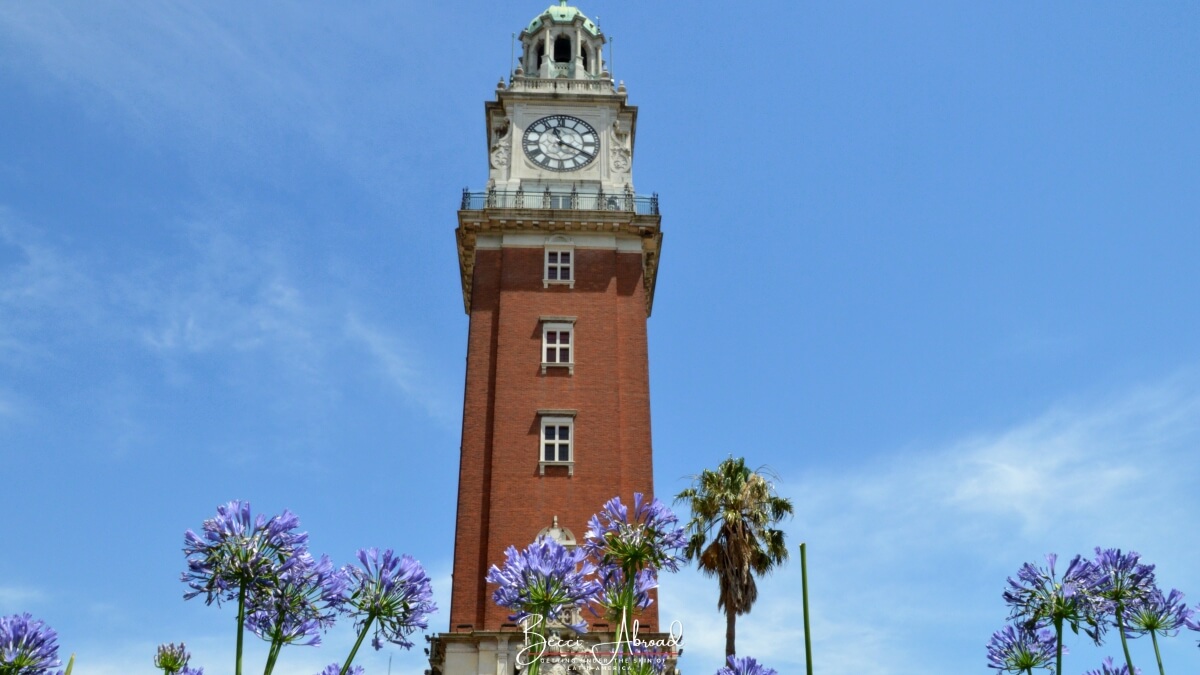


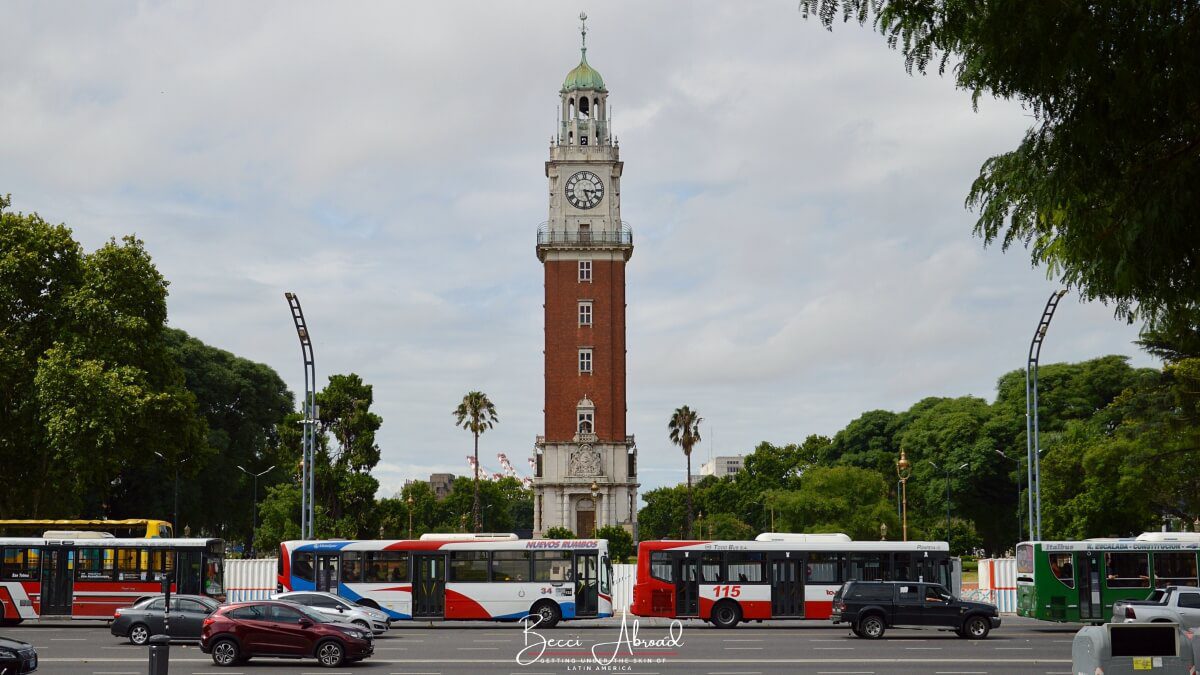
#16 The Iconic Barolo Palace
The Barolo Palace is a truly iconic building in Buenos Aires. The palace, also known as Palacio Barolo in Spanish, is one of the best things to do in Buenos Aires if you want to enjoy the city’s rich architecture.
Palacio Barolo was designed by Italian architect Mario Palanti for local businessman Luigi Barolo. The inspiration for the design of the building was drawn from Dante’s Divine Comedy.
As described in the Divine Comedy, the Barolo Palace’s design symbolizes the journey from Hell to Heaven. When you enter on the ground floor, the building is dark and mystical as a symbol of how the poem describes Hell. But as you continue up the floors in the Barolo Palaces, the building’s interior gets lighter and lighter until you reach the top floors; and enter the lighthouse representing Heaven.
Take a guided tour of the Barolo Palace to reach the building’s highest point, the lighthouse, and sit with Buenos Aires at your feet!
The construction of the Barolo Palace started in 1919 and was completed in 1923. From its opening in 1923 until 1936, the Barolo Palace held the title of the tallest building in Buenos Aires and South America.
From the rooftop café of the Barolo Palace, Salón 1923, you can enjoy panoramic views of the city while grabbing brunch or a drink.


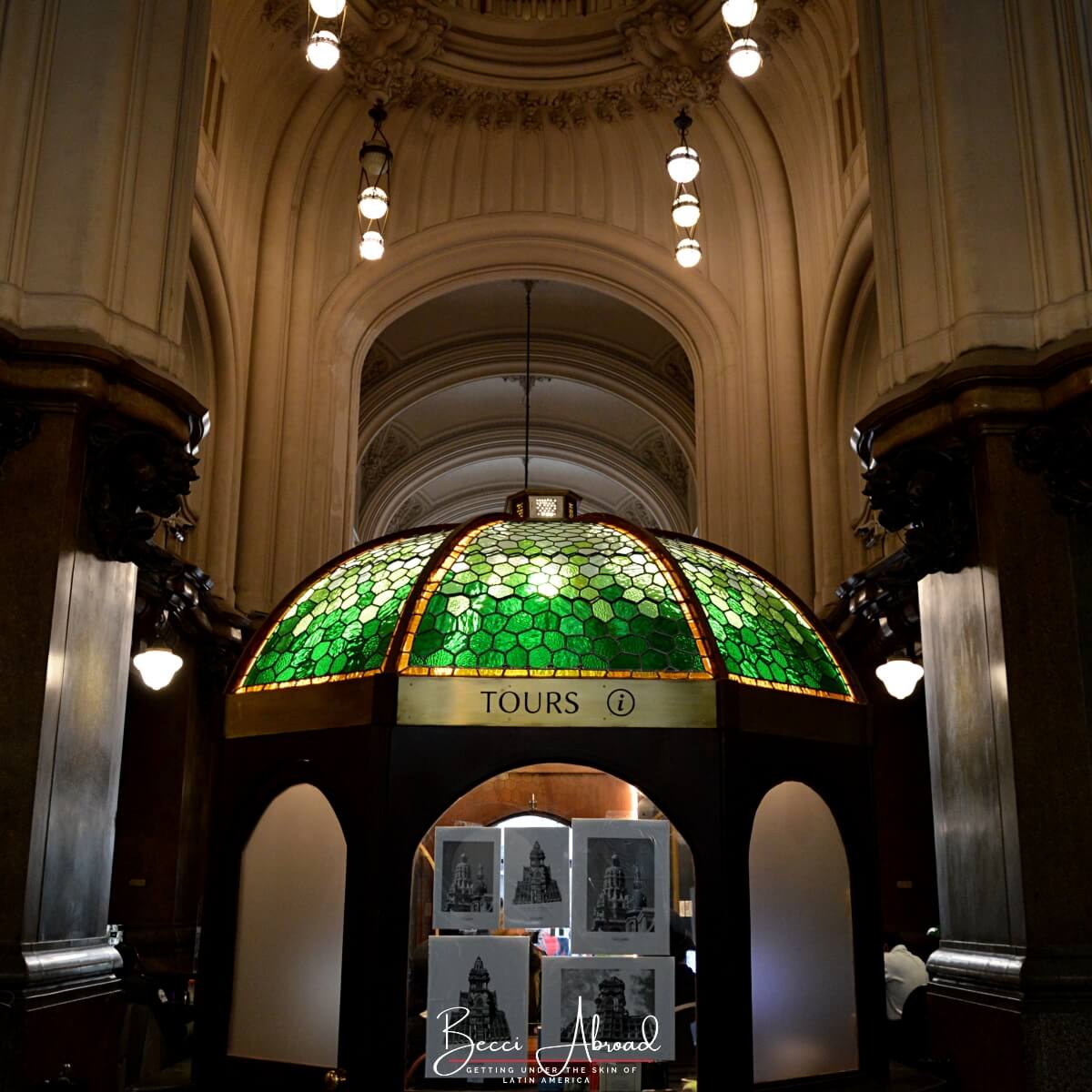
#17 Experience Tango
Tango is a traditional Argentine dance and music style that originated in the late 19th century among urban lower-class European immigrants in Buenos Aires.
Tango is considered a significant aspect of Argentine culture. Tango is also inscribed on UNESCO’s Representative List of the Intangible Cultural Heritage of Humanity, and for that reason, tango is also on many international visitors’ lists of things to do in Buenos Aires!
Tango dance is known for its passionate and seductive moves. Whereas, tango music and lyrics often are characterized as nostalgic or sad representing the immigrants’ homesickness and desperation.
Carlos Gardel is widely recognized as the most famous Argentine tango singer. He played a key role in popularizing tango globally during its peak in the 1930s and 1940s.
Tango also represents Argentine history. During the military dictatorship in Argentina in the 1950s, tango’s popularity declined as dance halls and public gatherings were banned. However, with the return of democracy in the 1980s, tango began to re-emerge and regain popularity. Check of this post to learn more fascinating facts about tango in Argentina.
In the neighborhood of Almagro, you can learn more about the history of tango and the life of tango singer Carlos Gardel by visiting the Carlos Gardel Museum. Learn more about hidden gems in Buenos Aires.
In Buenos Aires, you can experience tango either by attending a tango show to watch professional tango dancers show their skills or by signing up for a tango dance lesson at a local milonga, tango dancehall.
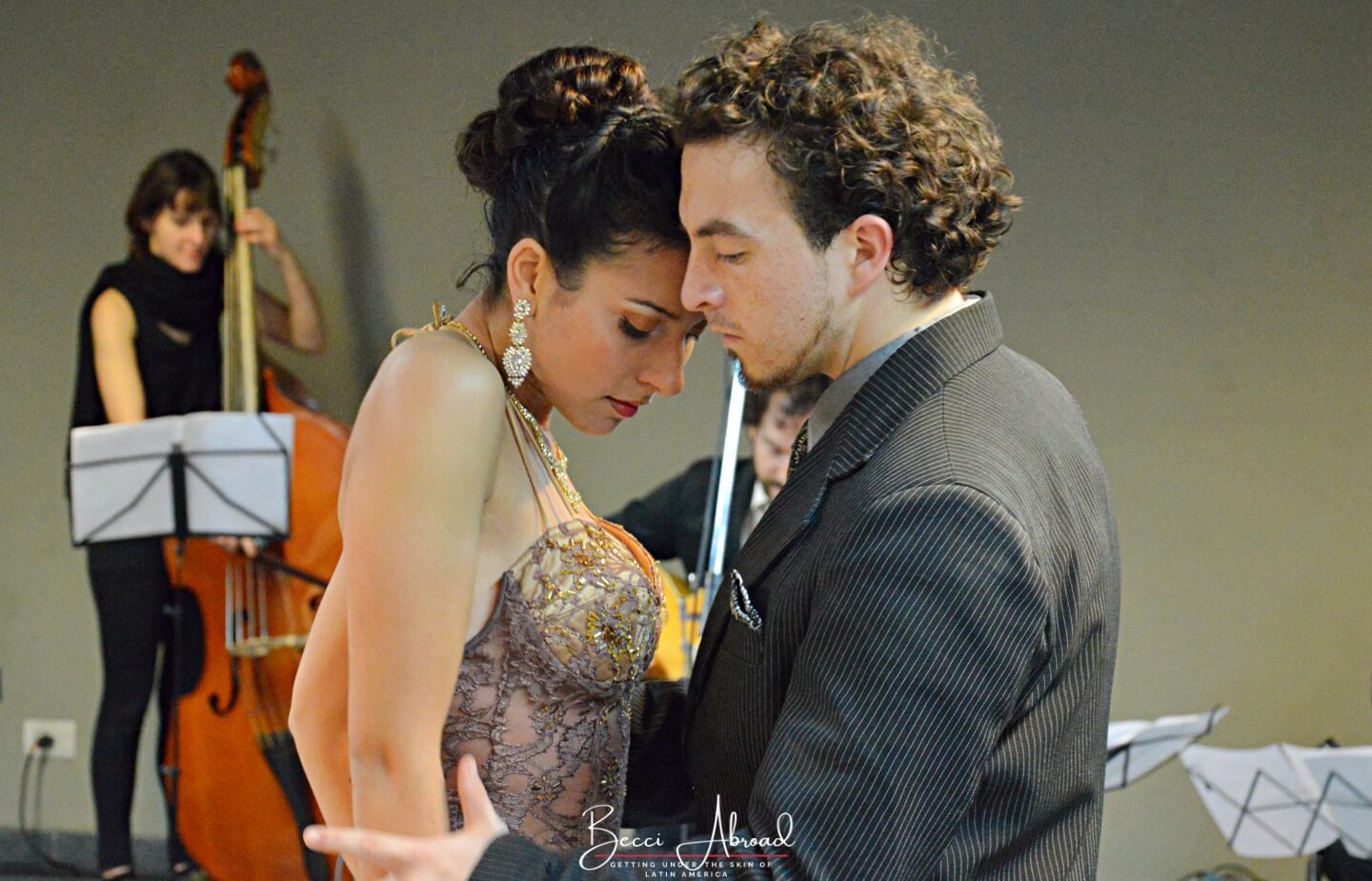


#18 The Modern Art Museum: MALBA
The Museum of Latin American Art in Buenos Aires, also known as MALBA, is a must-visit for all art lovers visiting Buenos Aires!
The modern art museum features permanent Latin America and Argentine collections, and changing exhibitions.
The extensive collection of Latin American and Argentine art is considered to be one of the best in the world, which makes the MALBA one of the top modern art museums for contemporary Latin American art globally.
The MALBA opened in 2001 and is also used as a local cultural center that features many different art forms such as literature, cinema, and photography.
#19 The Palermo Parks: The Botanic Garden & the Palermo Rose Garden
Buenos Aires’ green spaces and local parks offer a peaceful break after a busy day of sightseeing in the city.
Two of the most popular green spaces in Buenos Aires are the Botanic Garden and the Palermo Forests located in the popular Palermo neighborhood.
Buenos Aires Botanic Garden, also known as jardín botánicó Carlos Thays, is a picturesque green space featuring around 6,000 species of plants, flowers, and trees. Throughout the garden’s seven hectares of land, greenhouses, and sculptures create a beautiful setting for an open-air museum in the botanic garden.
Buenos Aires Botanic Garden is located right next to Plaza Italia, and close to the most popular parts of Palermo, Plaza Serrano. At Plaza Serrano, you will find plenty of restaurants and bars for a good night out.
The Palermo Forests, also known as Bosques de Palermo or Parque Tres de Febrero in Spanish, are located close to the Botanic Garden.
Inside the enormous Parque Tres de Febrero urban park, you will also find a beautiful rose garden, Paseo El Rosedal, a lake with paddle boat trips, and a planetarium.



#20 The Best Street Art in Buenos Aires
The street art scene in Buenos Aires is vibrant and with high-quality murals created by both local and international artists. If you are interested in urban art and want to learn a bit more about modern history in Buenos Aires, a street art tour is one of the best things to do in Buenos Aires.
Street art in Buenos Aires spans from political statements over decorative murals to commercial advertisements. Various neighborhoods in the city, such as Palermo, Colegiales, and Coghlan, are known for showcasing street art murals that are worth exploring.
Palermo is the largest neighborhood in Buenos Aires, with various sub-neighborhoods like Palermo Viejo, Palermo Soho, Palermo Chico, and Palermo Hollywood, offering a diverse street art scene. Especially, the area around Plaza Armenia and Plaza Serrano in Palermo is well-known for its large amounts of street art.
Colegiales and Coglan are residential neighborhoods in the northwestern area of Palermo, offering a unique experience of Buenos Aires with its street art and local vibe. Buenos Aires Street Art offers guided street art tours of each area.
An interesting fact about street art in Buenos Aires is that street art is allowed with only the approval of the property owner! There is no need for authorization from local authorities as long as the property owner approves. Street art artists collaborate with owners of dilapidated buildings and shops to revitalize them with fresh and vibrant designs.
Read more about street art in Buenos Aires!
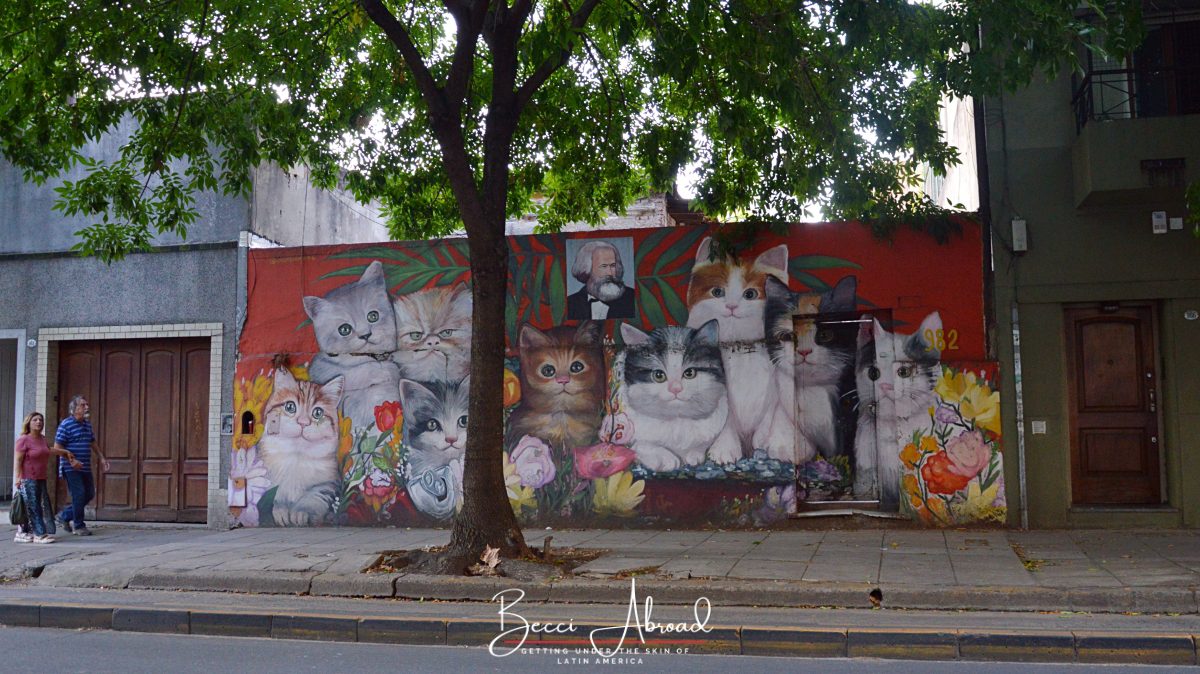
What are your favorite things to do in Buenos Aires? Are there any popular attractions that you would like to add to the list? Or maybe you are planning a visit to Buenos Aires? Did you find this post useful? Please share your thoughts and knowledge below!







